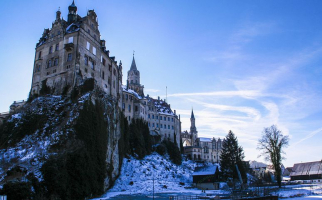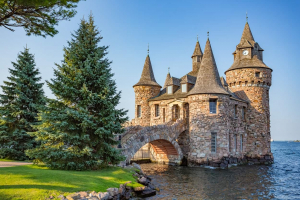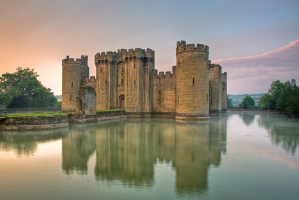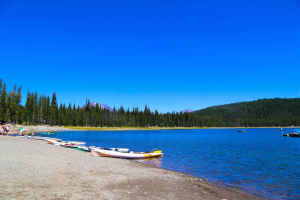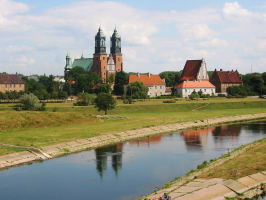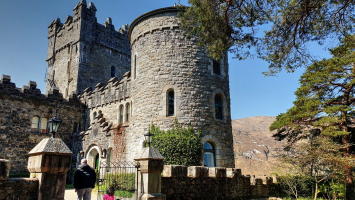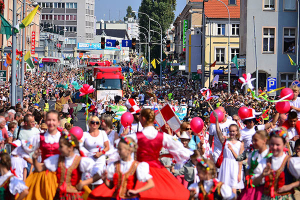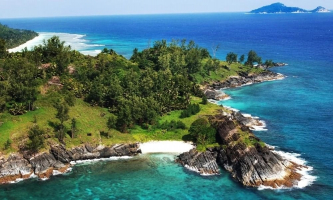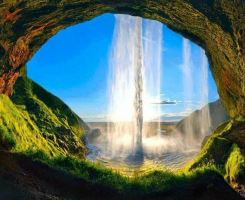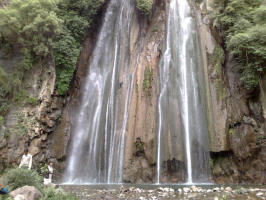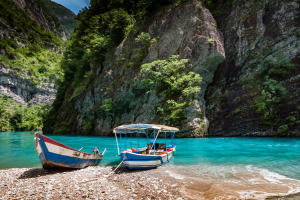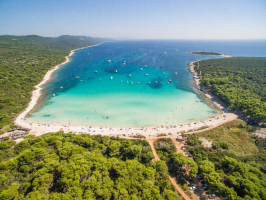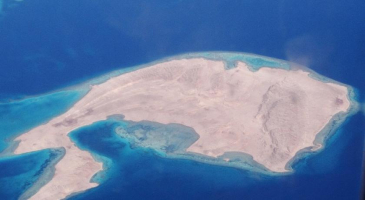Top 11 Most Beautiful Castles in Poland
Poland, located in the heart of Central Europe, has a tremendous history and legacy. Poland's architecture reflects its history, and nowhere is this more ... read more...evident than while admiring its castles. Poland has several very wonderful castles to select from, ranging from ruins with deep historical value to rebuilt and spotless royal homes. Make time on your next vacation to this ancient nation to see as many of the castles in Poland as possible. Here are some of Poland's most stunning castles.
-
The Moszna Castle is a medieval castle and palace in the southern Polish hamlet of Moszna. The mansion is located around 30 kilometers south of Opole, between the villages of Prudnik and Krapkowice, and is an exceptional example of romantic fairy-tale and eclectic architecture.
The building's history dates back to the 18th century, while indications of older cellars were uncovered in the grounds during excavation and repair work around the turn of the twentieth century. Some of those might have been the remains of a Templar castle. Following WWII, more excavations revealed a medieval palisade.
Niedzica Castle is today noted for more than its ancient architecture. During castle visits, you may dress in traditional monk's robes and dine on an actual medieval feast with your hands and old-fashioned wooden utensils rather than modern metal silverware. To complement these regular feasts aimed to provide a picture of the past in Poland, there are sometimes jousting tournaments and medieval dancing.
Aside from the castle, the entire complex comprises a park with no defined boundaries and neighboring farms, meadows, and a forest. Only the park's main axis may be described as geometrical. It leads from the entrance to the castle through the oak and horse-chestnut avenues. Later on, the park enters an avenue of lime trees, with symmetrical canals flowing along both sides of the route, bordered with a few rhododendron species. The park's axis ends at the base of a former Hubert von Tiele-Winckler monument.
Location: Moszna, Opole, Poland
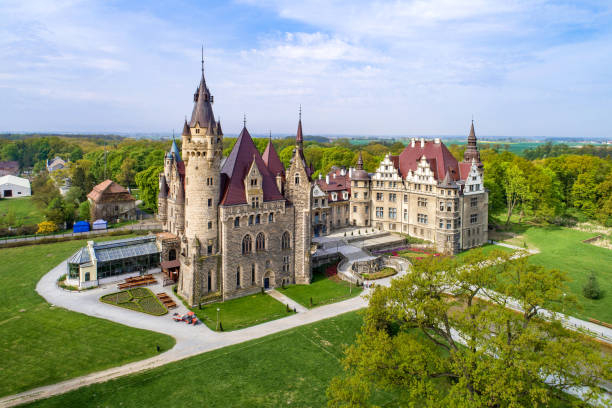
istockphoto 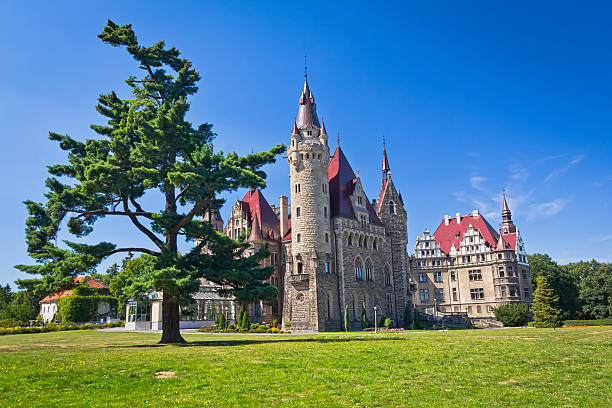
istockphoto -
Niedzica Castle, also known as Dunajec Castle, is located in Niedzica, Poland's southernmost region (Nowy Targ County in Lesser Poland). Kokos of Brezovica built it between 1320 and 1326 on the site of an earlier castle protected by clay walls in the Pieniny mountains. The Niedzica Castle is located on a hill 566 meters above sea level, 300 meters upstream from the mouth of the Dunajec River, measured from the center of the dam on Lake Czorsztyn. The remains of Czorsztyn Castle on the other side of the lake provide the greatest perspective of the outline of Niedzica Castle. It is regarded as one of the most attractive castles in the country and has been on the covers of several publications.
Lake Czorsztyn, a new artificial reservoir, was formed in 1994 by damming the Dunajec River downstream of the castle. The castle is currently around 30 meters above the highest sea level. The castle hill is made out of limestone rock mounted on shale and marl discovered considerably below the current Dunajec Riverbed. Despite evident surface erosion, studies and assessments demonstrate that the rock layers composing the limestone bank are weather-resistant and offer a safe foundation for the castle. A variety of strengthening works were carried out in the area between the high- and low-water marks to ensure the hill's stability. Concrete reinforcing of rocks, substratum replacement, and surface protection components on the slope are among the activities.
Location: Niedzica-Zamek, Poland
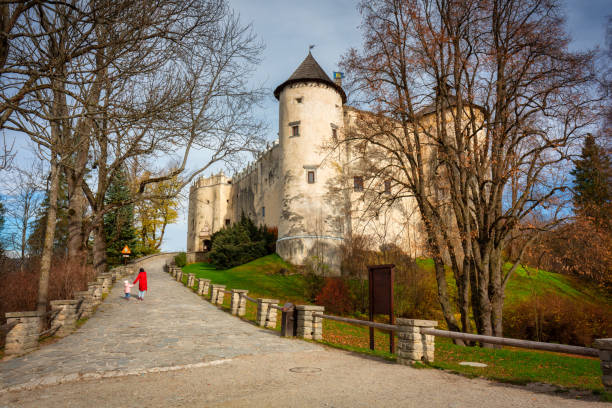
istockphoto 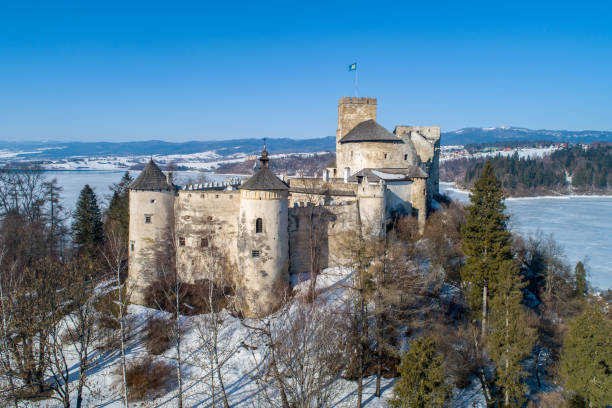
istockphoto -
The Pieskowa Skała is located in Poland's Pradnick Valley. Pieskowa Skała is a limestone outcropping. This rock houses the castle, which is inaccessible from three sides. It was constructed in the 14th century by King Casimir III The Great as part of a line of 25 fortified castles that stretched from Kraków to Czstochowa. These castles are located along the Trail of the Eagles Nests. It is surrounded by the natural splendor of the Polish Jurassic Highland, sometimes known as the Polish Jura. The castle was originally erected in the Gothic architectural style and was renovated into the standard Renaissance architectural style that we are acquainted with between 1542 and 1580.
It's a great example of defensive Polish architecture. During the 17th century, bastion defences were constructed to the edifice. The 25 medieval castles were built to protect the country's southern border and the capital of Poland, Krakow, against a Czech invasion. More Than Life At Stake (1968), Janosik (1971), The Ring and the Rose (1986), With Fire and Sword (1999), and The Amazing Race have all included the castle (2006). It was also featured on a 4-zloty stamp issued by the Polish Post in 1971, which was still in use until 1994. It was included in the Polish Castles series.
Location: Sułoszowa, Poland
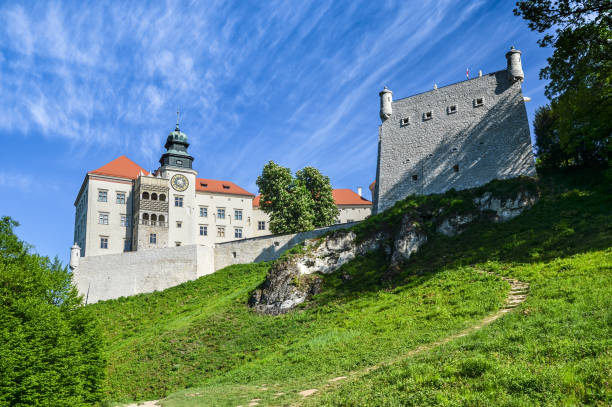
istockphoto 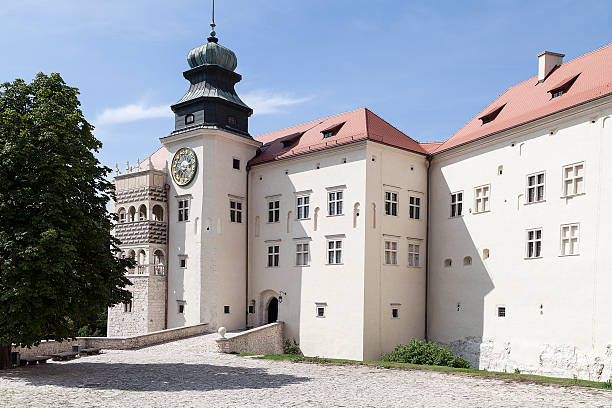
istockphoto -
The Castle of the Teutonic Order in Malbork is a Teutonic castle and stronghold built in the 13th century near the town of Malbork, Poland. It is the world's biggest castle in terms of land size and a UNESCO World Heritage Site. It was initially built in the shape of an Ordensburg fortification by the Teutonic Knights, a German Catholic monastic order of crusaders. The Order called it Marienburg after Mary, Jesus' mother.
During the Thirteen Years' War, Bohemian mercenaries sold it to King Casimir IV of Poland in exchange for indemnities in 1457, and it then served as one of several Polish royal residences and the seat of Polish offices and institutions, interrupted by several years of Swedish occupation, until the First Partition of Poland in 1772. From then on, the castle was under German control for nearly 170 years, until 1945, when it fell into disrepair as military technology developments left it a mere historical curiosity. The building period is debatable; nonetheless, most historians recognize the 132 years between 1274 and 1406 as the construction period.
The castle is a superb example of a medieval fortification and, when completed in 1406, was the biggest brick castle in the world. In December 1997, UNESCO listed the "Castle of the Teutonic Order in Malbork" and the Malbork Castle Museum as World Heritage Sites. It is one of the region's two World Heritage Sites, along with the "Medieval Town of Toru", which was built in 1231. Malbork Castle was also recognized as a National Historic Monument in Poland on September 16, 1994. The National Heritage Board of Poland maintains its listing.
Location: Malbork, Poland
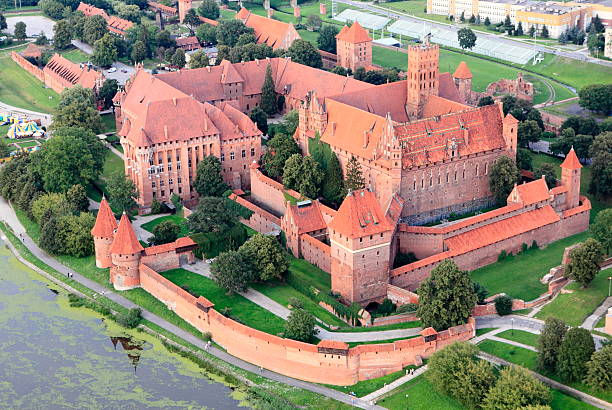
istockphoto 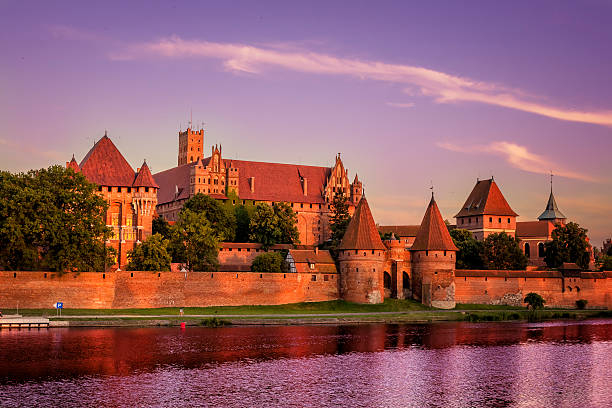
istockphoto -
The Wawel Royal Castle and the Wawel Hill on which it stands among Poland's most historically and culturally significant sites. It was built on the instructions of King Casimir III the Great and expanded throughout the ages into a variety of structures centered around an Italian-styled courtyard on the Vistula River in Kraków. It encompasses almost all European architectural styles from the Medieval, Renaissance, and Baroque eras.
The castle is part of a fortified architectural complex built on a limestone outcrop on the Vistula River's left bank at an elevation of 228 meters above sea level. The complex has a number of historic and national structures, notably the Wawel Cathedral, where Polish emperors were crowned and buried. Some of Wawel's oldest stone buildings date back to 970 AD, as do the country's earliest examples of Romanesque and Gothic architecture. The existing castle was constructed in the 14th century and developed during the next several centuries. Wawel was designated as the first World Heritage Site as part of Kraków's Historic Centre in 1978.
Wawel Castle, for centuries the abode of Poland's rulers and a symbol of Polish statehood, is today one of the country's major art museums. The museum, which opened in 1930, has 10 curatorial departments that are in charge of collections of paintings, prints, sculpture, textiles, notably the Sigismund II Augustus tapestry collection, goldsmith's work, guns and armor, ceramics, Meissen porcelain, and period furniture. The museum's eastern art collection includes Europe's greatest collection of Ottoman tents. The museum is also an important center for the conservation of works of art, with seven specialist conservation workshops.
Location: Old Town, Kraków, Poland
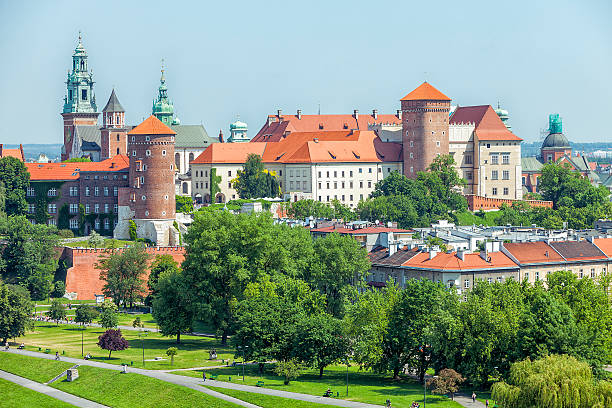
istockphoto 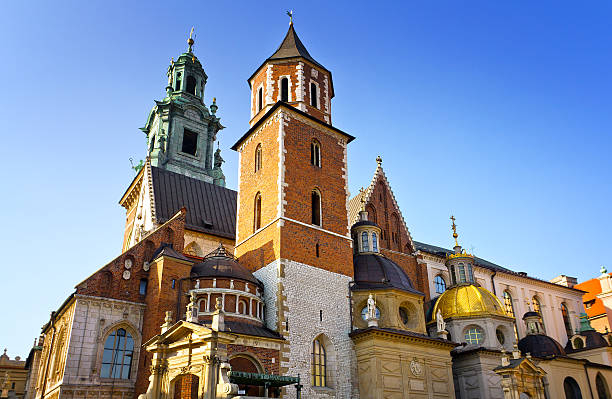
istockphoto -
In the 11th century, a wooden fortress was built in the Polish town of Bedzin. By the 14th century, it had been replaced by a stone one, which still exists today. Multiple stone walls defend the interior houses and courtyard, which was crucial during the various fights and sieges that occurred at Bedzin. Bedzin was devastated by Swedish military forces in the 17th century, and subsequently by the Nazis during WWII, when the local Jewish community was targeted. Despite its tragic history, Bedzin Castle is a haunting reminder of Poland's past.
In 1956, the castle became the home of the Zagbie Museum. The museum houses several collections: one dedicated to armament from medieval to World War II times; another to the history of the Bdzin Castle; a third to the castles of other nearby castles founded by Casimir the Great (Eagle Nests Trail or Szlak Orlich Gniazd); and a fourth to the military history of the Bdzin region. The castle includes two towers, one cylindrical and one square. Smaller structures were connected to the towers. There were three tiers of fortifications, and the castle was linked to the city walls, sections of which may still be seen today.
Location: Będzin, Poland
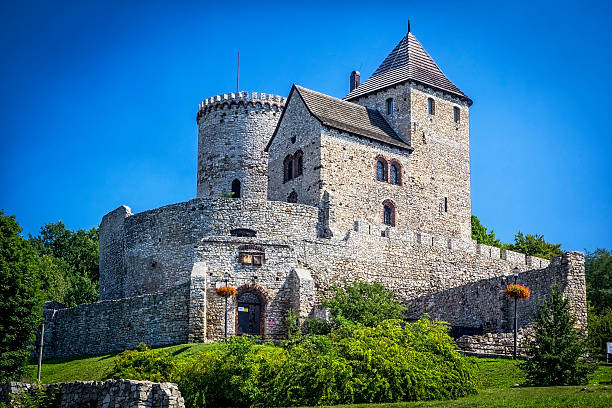
istockphoto 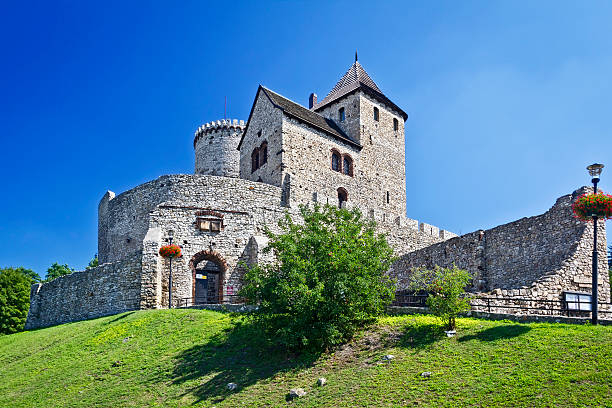
istockphoto -
The Gothic Kwidzyn Castle is an example of Teutonic Knights architecture. It was erected in the 13th century and served as the home of the Pomesanians, a Prussian clan. It has a spectacular and distinctive design because of a bridge that links to the castle and functions as a sewage tower as well as a means of crossing the neighboring river. You must visit Kwidzyn Castle to see the underground medieval crypts, the museum, and the church.
The Swedes largely demolished the stronghold during the 17th century Deluge battles. The castle housed a court from the First Partition of Poland until World War II. The castle was demolished in the 18th century and converted into offices and a school. This alteration was halted by Frederick William IV in 1854, after which the castle was restored. The restored north-western and western wing now houses the Malbork Branch of the Castle Museum. The biggest dansker, as well as a well with a porch, have been maintained.
In Kwidzyn, the castle is located on Gdaska Street. The castle served as a chapter house for the Pomesanians, who erected it in the early 14th century in a square arrangement with a courtyard and square keeps in the castle's corners, and a dansker supported by five arches. In 1410, King Wadysaw II Jagieo took over the fortress while leading fights against the Teutonic Knights. The fortress was returned to the Teutonic Knights by the Second Peace of Toru.
Location: Kwidzyn, Pomeranian Voivodeship, Poland
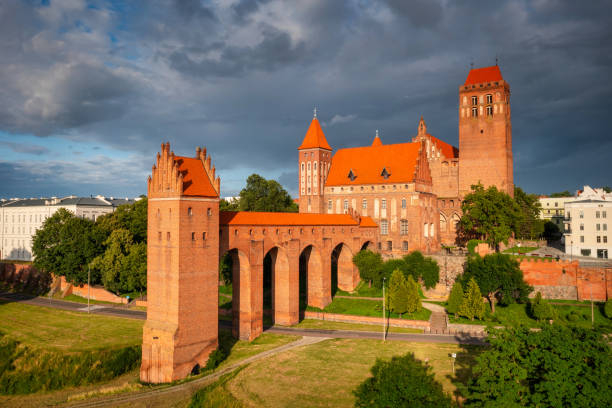
istockphoto 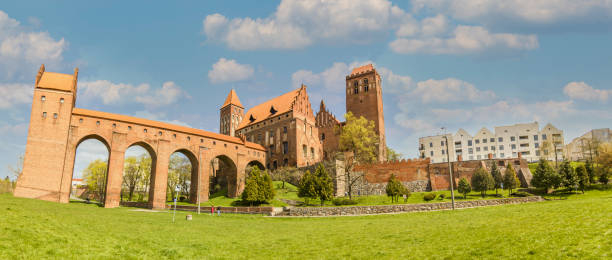
istockphoto -
Ogrodzieniec Castle is a destroyed medieval castle in Podzamcze, near Ogrodzieniec, in the Polish Jura area of south-central Poland. The castle, which dates back to the 14th century, has been restored multiple times over its lengthy history. It is perched on the summit of Castle Mountain, the highest point in the Kraków-Czstochowa Upland at 515.5 meters. The remains are available to the public and are part of the Track of the Eagles' Nests, a hiking trail that connects several well-known castles in the area.
Fragments of renaissance lily frescos may still be seen on the lower floor. A chapel made from architectural components of the castle (portal, volutes, cornice) sits near the castle, on the market of Podzamcze village. The vault keystone round shot alleged to have fallen inside the castle during the Swedish Deluge (1655-1660), and a Renaissance Our Lady sculpture are all authentic parts of the castle chapel. Locals have decorated the sculpture in the folk manner (with oil paint), disguising its original look.
According to local legend, the "Black Dog of Ogrodzieniec" may be seen patrolling the remains at night while hauling a hefty chain. The dog is said to represent the soul of Kraków's Castellan, Stanisaw Warszycki, whose soul is also said to haunt the remains of Daków Castle, where it appears as a headless horseman.
Location: Podzamcze, Poland
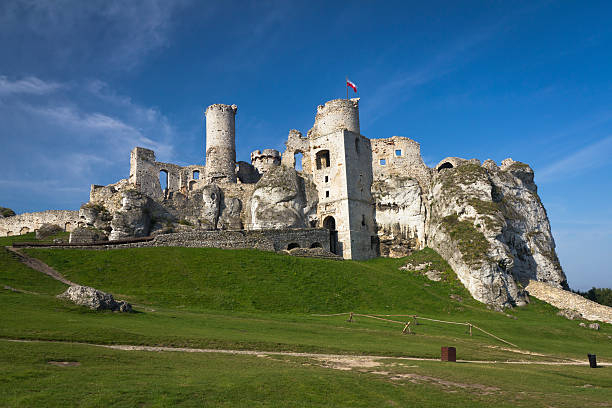
istockphoto 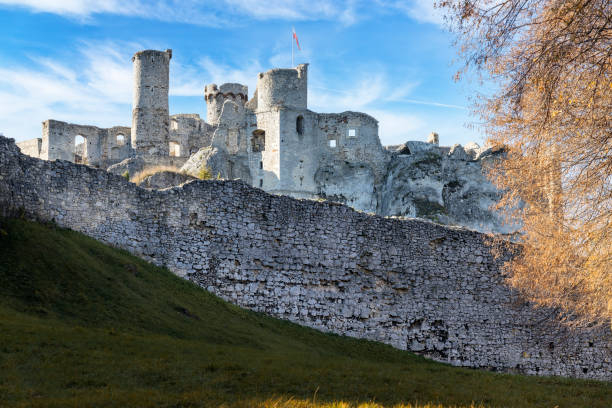
istockphoto -
Czocha Castle is a fortified castle in the Polish settlement of Czocha (Gmina Lesna), Luba County, Lower Silesian Voivodeship. The castle is situated on Lake Lenia, along the Kwisa river, in what is now Poland's Upper Lusatia. Czocha castle was built on gneiss rock, with the keep being the earliest section, to which house structures were later added.
This Polish castle, known as "The College of Wizardry" in recent years, has been the setting of live-action wizard role-playing games. Czocha Castle, on the other hand, has a much longer history than Harry Potter. Czocha Castle, built in the 13th century, is a defensive fortress built directly on gneiss rock for endurance. The castle was plundered during and after WWII, but it has since been renovated and made into an excellent tourist destination.
Gdzie jest genera? (Where is the General? ), Legenda, The Hexer (picture), The Hexer (TV series), Beyond Sherwood Forest, Spellbinder, and serial The Secret of the Cipher Fortress were all filmed at the complex. Since 2014, the castle has also served as a location for College of Wizardry, a live action role-playing game (LARP) established in their own world and comparable to Harry Potter. The series was put on hold in 2019 due to ongoing difficulties among its original group. However, a successful crowdfunding campaign salvaged the LARP, and a new organizing team has continued to hold events at the castle.
Location: Czocha, Poland
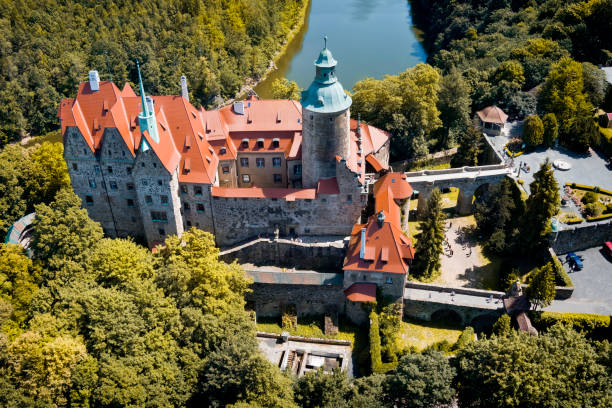
istockphoto 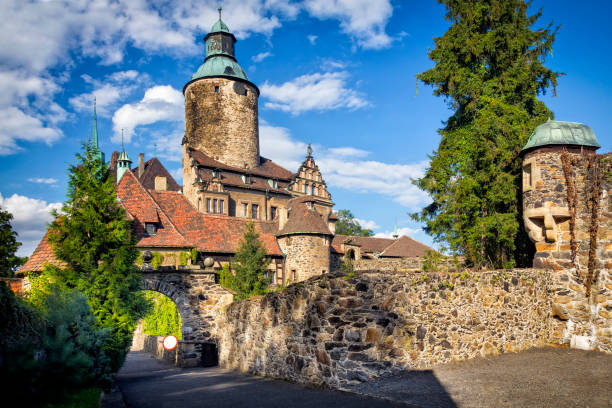
istockphoto -
Bolków Castle is a castle located in Bolków on Castle Hill, with a height of 396 meters, where the slope is cut by the Nysa Szalona river, with a severe cliff (with a 90-metre drop); the eastern side of the hill progressively falls and is swallowed up by the town. The castle is an upland fortress with a surface area of 7600 m2. Bolków, Lower Silesian Voivodeship, Poland is the location of the castle.
Cistercian monks from Krzeszów purchased the castle at Bolków in 1703. The castle has remained abandoned since then. The Cistercians finished the interior restoration in 1715; by an order dated October 30, 1810, the castle is transferred to the Prussian State Treasury (secularization). During this period, the structure begins to deteriorate. After the Napoleonic Wars, Russian soldiers lived at the castle in 1813. They excavated a tunnel at the foot of the tower to get to the hunger dungeon in search of the mythical riches. The authorities permitted the removal of a portion of the walls in 1885, and the resulting debris was utilized to reconstruct the roadways.
The mayor of Bolków (Feige) appoints the Verein für Heimatpflege (Bolków Regional Society) on March 10, 1913, with the goal of revitalizing tourism. However, the start of the war prevented the idea from being carried out. The House of Women was restored in 1922, with the ground floor becoming a youth hostel and the first story becoming a regional museum. After Hitler took power, the castle became state property. The castle is said to have hosted a research center that oversaw local companies.
Location: Bolków, Lower Silesian Voivodeship, Poland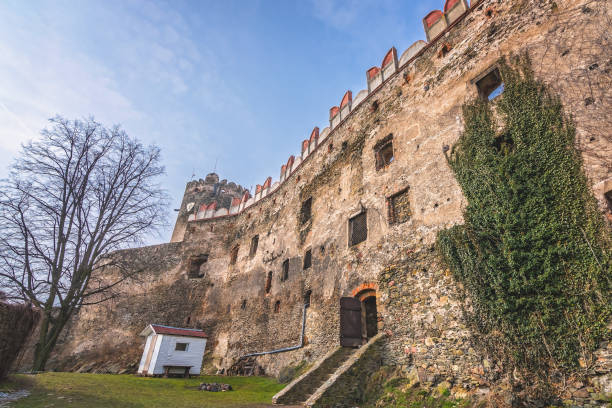
istockphoto 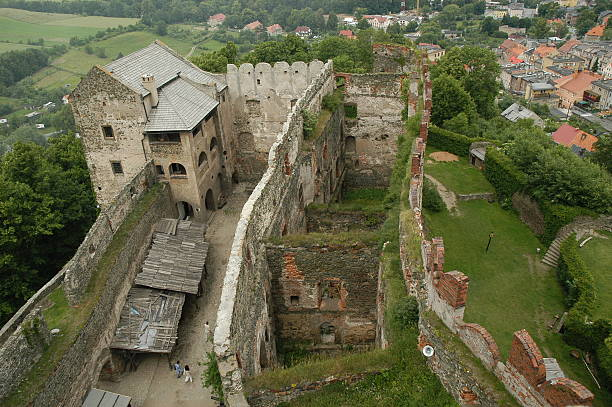
istockphoto -
Ksiaz Castle, Poland's third-largest castle, is also known as the Pearl of Upper Silesia. Ksiaz, which was built in the 13th century, has seen several government transitions and has been the location of numerous historical agreements. This magnificent fortress has hosted everyone from Russian czars to British leaders. Today, Ksiaz Castle provides numerous guided tours every day, and there are various restaurants within the castle walls where you may dine while surrounded by centuries-old art and architecture.
Construction work was conducted out inhumanely by forced laborers and Gross-Rosen concentration camp prisoners. Following the Vistula-Oder Offensive in 1945, the castle was seized by Red Army soldiers. The Fürstenstein subcamp is commemorated by a monument. During the Soviet occupation, parts of the ancient building structure were dismantled, and other artifacts were taken or destroyed.
Following the war, communist authorities took over the castle complex and used it as a vacation home and cultural center. Large portions of the interior have been meticulously repaired in recent years. Parts of the tunnel network beneath the castle are being utilized for gravimeter measurements by the Polish Academy of Sciences, while many WWII-era tunnels are open to the public on guided tours.
Location: Wałbrzych, Poland
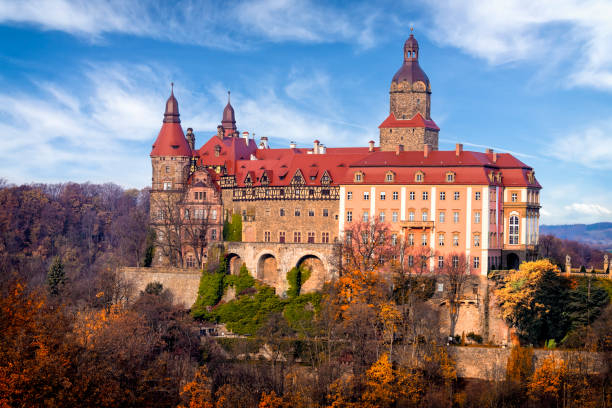
istockphoto 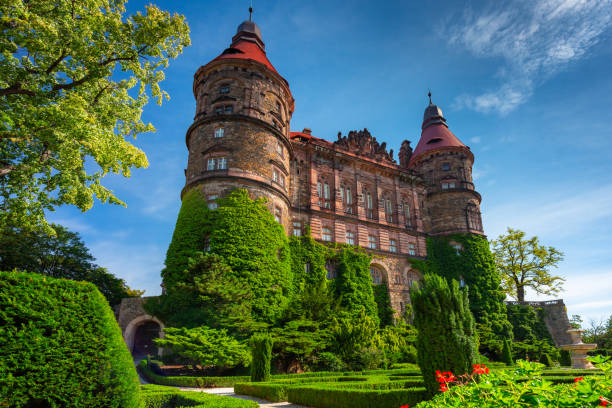
istockphoto














